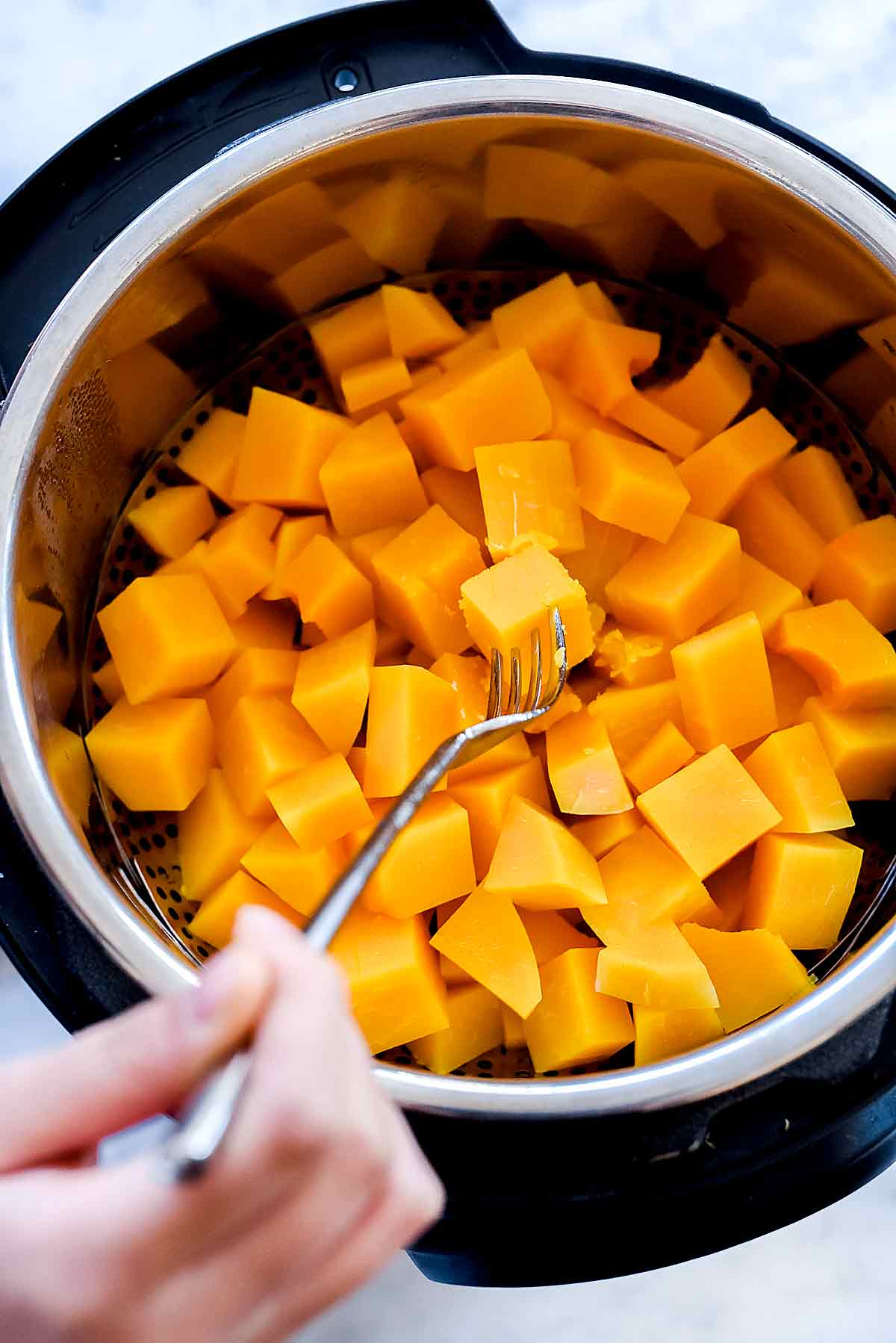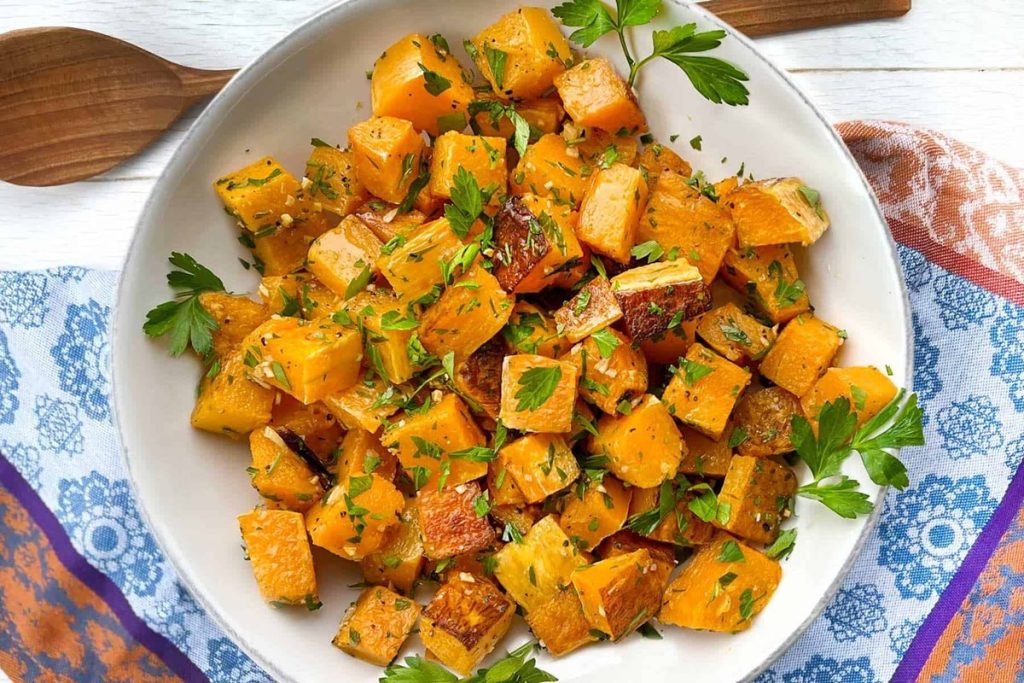Succulent Stovetop Recipes for Butternut Squash
I. Introduction
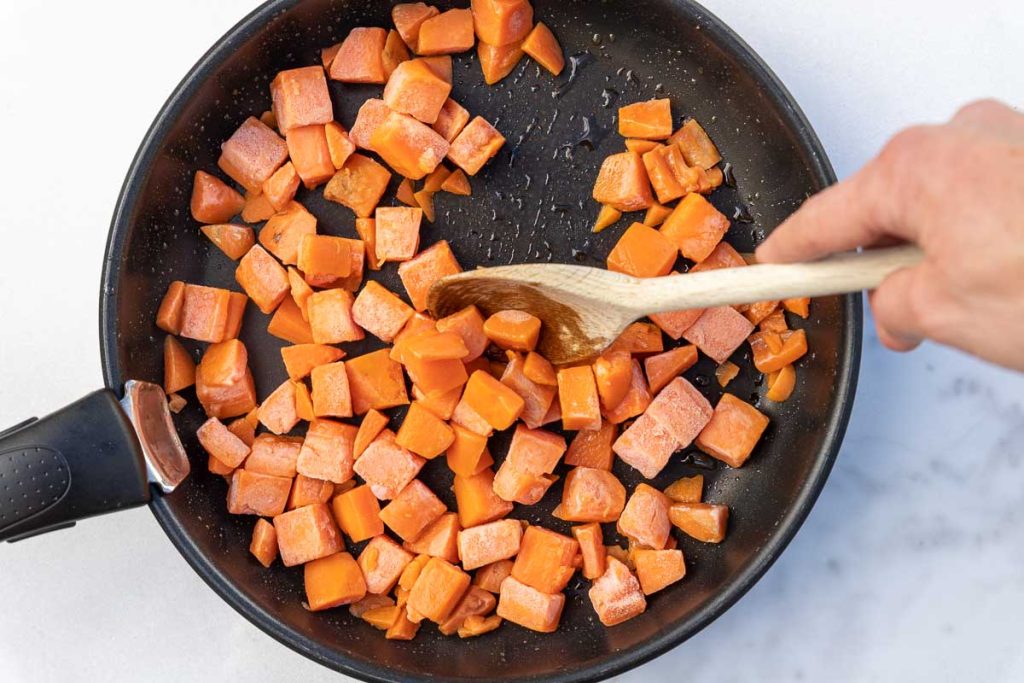
Butternut squash is a versatile vegetable that can be used in various delicious recipes. Its sweet and nutty flavor, along with its creamy texture, make it a popular choice for cooking. In this article, we will explore different stovetop cooking methods for butternut squash, including sautéing, steaming, and roasting. Each method brings out unique flavors and textures, allowing you to enjoy the best that butternut squash has to offer.
II. Preparing the Butternut Squash
Before diving into the cooking methods, it is essential to properly prepare the butternut squash. This involves peeling and cubing it for cooking.
A. Peeling and cubing the squash
To start, you’ll need to remove the skin and seeds from the butternut squash. The skin can be tough, so it’s best to peel it off. Use a vegetable peeler or a sharp knife to carefully remove the skin. Once peeled, slice the squash in half lengthwise and scoop out the seeds.
After removing the skin and seeds, cut the squash into uniform cubes. This will ensure even cooking and a consistent texture in your dishes. Aim for cube sizes around 1 inch or your desired preference.
III. Stovetop Cooking Methods
Now that the butternut squash is prepped and ready, let’s explore three stovetop cooking methods that will bring out the best in this versatile vegetable.
A. Sautéed Butternut Squash
Sautéing is a quick and flavorful way to cook butternut squash. It allows for caramelization and the retention of its natural sweetness.
To sauté butternut squash:
- Heat a skillet or sauté pan over medium heat and add some olive oil or butter.
- Once the oil or butter is heated, add the cubed butternut squash to the pan.
- Sauté the squash, stirring occasionally, until it is golden brown and tender. This usually takes about 10-15 minutes.
- Season the squash with complementary herbs and spices, such as sage, thyme, or cinnamon, to enhance its flavor.
B. Steamed Butternut Squash
Steaming butternut squash is a healthier cooking method that preserves its natural flavors and nutrients.
To steam butternut squash:
- Cut the squash into small, evenly-sized pieces.
- Add water to a pot and place a steamer basket or colander above it.
- Place the cubed squash in the steamer basket or colander.
- Cover the pot and steam the squash until it is tender, which usually takes about 10-15 minutes.
- For added flavor, include aromatic ingredients like garlic, onion, or bay leaves in the steaming water to infuse the squash with delicious flavors.
C. Roasted Butternut Squash
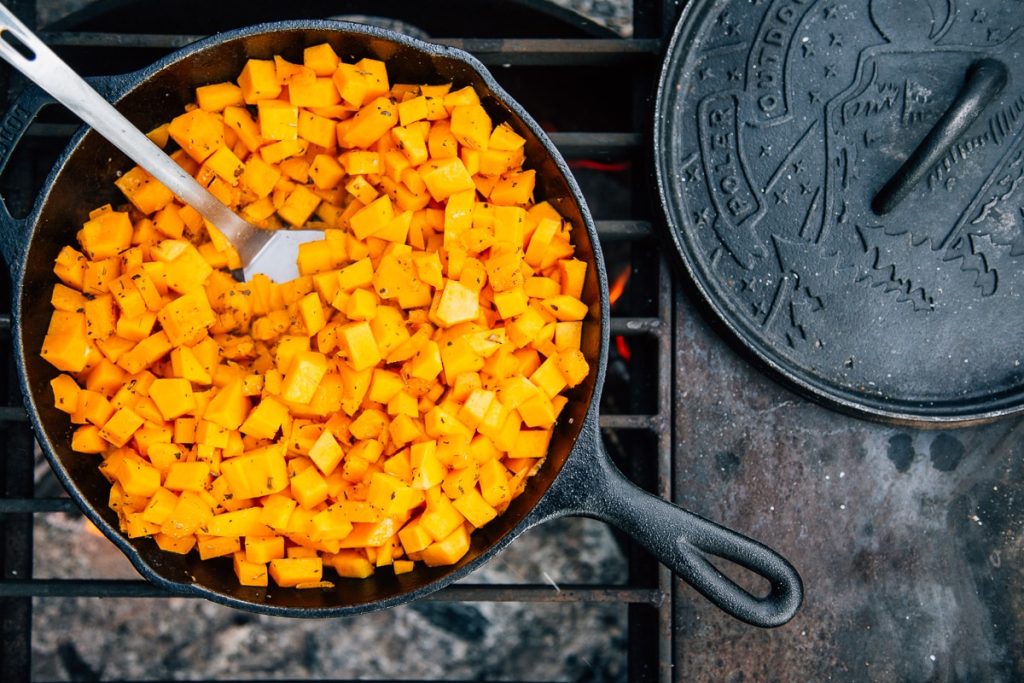
Roasting butternut squash on the stovetop gives it a delicious caramelized exterior and a soft, creamy interior.
To roast butternut squash:
- Heat a skillet or ovenproof pan on the stovetop over medium-high heat.
- Add some olive oil or butter to the pan and allow it to melt.
- Add the cubed butternut squash to the pan and spread it out in a single layer.
- Let the squash cook undisturbed for a few minutes until it develops a golden crust.
- Using tongs or a spatula, carefully flip the squash cubes to brown the other sides.
- Continue to cook and turn the squash until all sides are nicely browned and tender, usually taking about 15-20 minutes.
- Season the roasted butternut squash with simple seasonings like salt, pepper, or a sprinkle of cinnamon, depending on your preference.
IV. Spice Blends and Seasoning Options
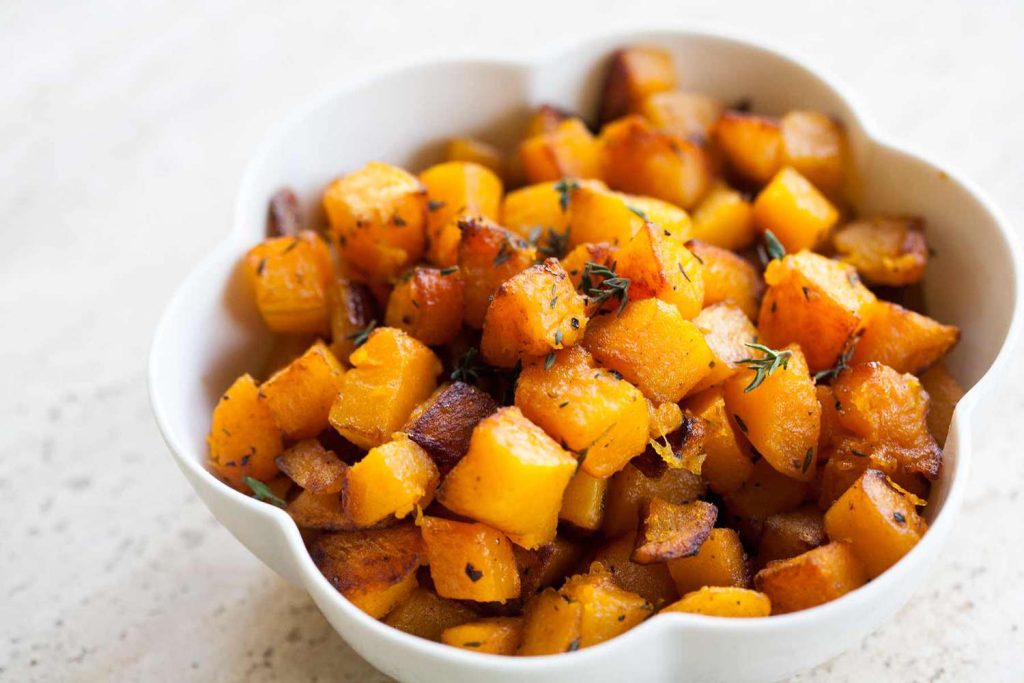
- Garlic and herbs blend Butternut squash has a naturally sweet and nutty flavor that pairs well with savory spices like garlic and herbs. You can create a simple seasoning blend by combining minced garlic with dried herbs such as rosemary, thyme, and oregano. Toss the butternut squash pieces with olive oil and sprinkle the garlic and herbs blend over them before roasting. The resulting dish will be flavorful and aromatic.
- Cumin and paprika seasoning For a more bold and smoky flavor, try seasoning your butternut squash with cumin and paprika. Cumin adds a warm earthiness while paprika brings a touch of sweetness and a vibrant red color. Mix these spices with a bit of salt, black pepper, and olive oil, then coat the butternut squash before roasting. The combination of flavors will give your dish a unique and delicious twist.
V. Serving Ideas and Variations
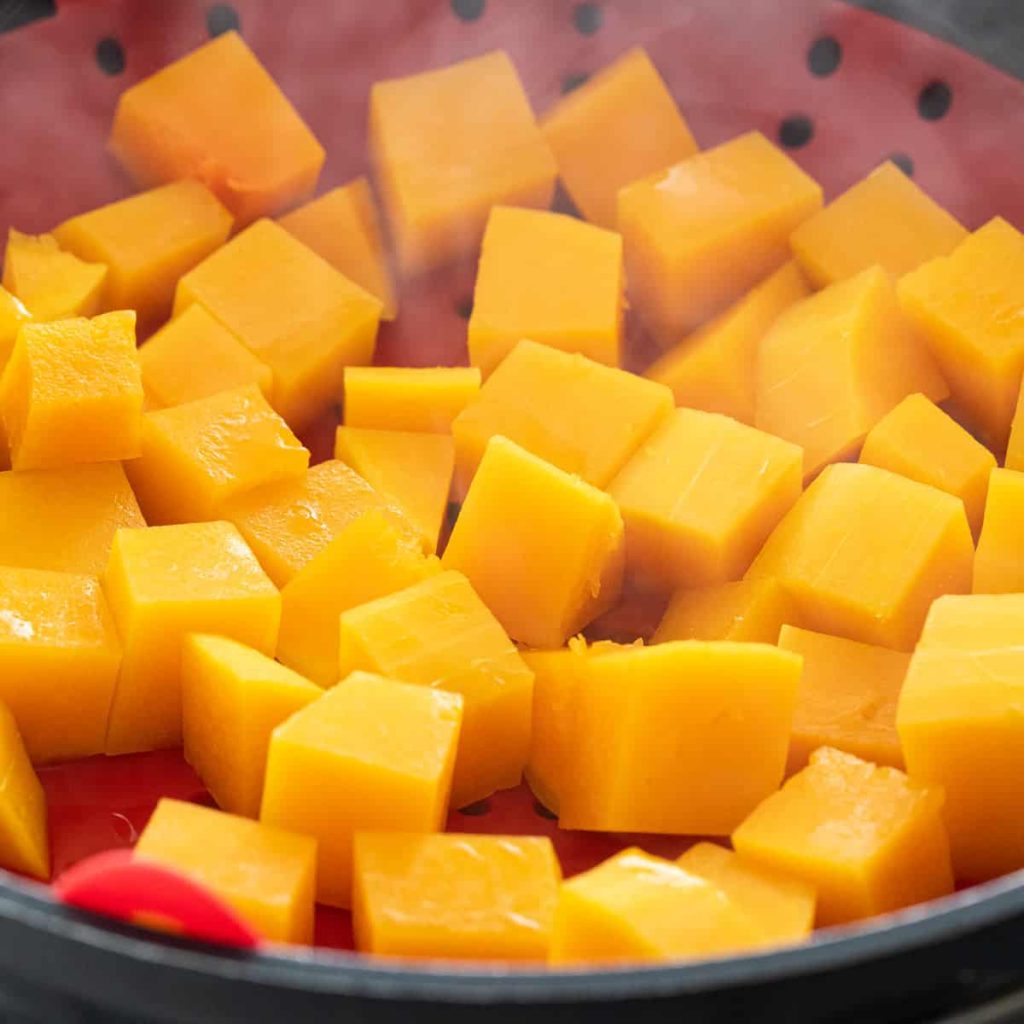
A. Standalone Side Dish
- Serving the cooked squash as a delicious side dish Simply roasting the seasoned butternut squash and serving it as a standalone side dish is a fantastic way to enjoy its natural flavors. The roasting process enhances the sweetness of the squash while adding a beautiful caramelization to the exterior. This simple preparation allows the natural flavors of the squash to shine through.
- Enhancing the dish with various toppings or garnishes If you want to take the flavor of your roasted butternut squash to the next level, consider adding various toppings or garnishes. Sprinkle some toasted nuts, such as pecans or walnuts, over the roasted squash to add a crunchy texture. Crumbled feta cheese or grated Parmesan can also be sprinkled on top to add a savory element. Fresh herbs, such as parsley or sage, can provide a vibrant and aromatic touch.
B. Incorporating Butternut Squash into Main Courses
- Adding squash to pasta or risotto dishes Butternut squash can be a fantastic addition to pasta or risotto dishes as it adds a creamy and hearty element. You can cook the squash until tender and mash it to create a smooth puree. Then, incorporate the pureed squash into your favorite pasta sauce or risotto base. This will not only add a vibrant orange color but also infuse the dish with a slightly sweet and nutty flavor.
- Using squash in soups, stews, or curries for heartier meals Butternut squash can also be used to create flavorful and comforting soups, stews, or curries. Cube the squash and add it to your favorite soup or stew recipe, allowing it to cook until tender. The natural sweetness of the squash will balance well with the savory flavors of the broth and other ingredients. Alternatively, use cooked and mashed butternut squash as a base for a creamy curry sauce. The natural sweetness of the squash will provide a beautiful contrast to the spices used in the curry.
In conclusion, butternut squash is a versatile ingredient that can be seasoned in various ways to bring out its unique flavor profile. Whether you prefer savory blends like garlic and herbs, or sweeter options like cinnamon and nutmeg, there are many creative ways to enjoy this nutritious vegetable. By incorporating butternut squash into standalone side dishes or main courses, you can explore its culinary versatility and create delicious meals for yourself and your loved ones.
